Yard birding here at the house made a dramatic improvement Saturday (9/7/2019) morning between about 10am and noon. For the past several days there had been very few birds in the yard, probably in part due to the accipiter that’s been visiting and which I featured in a prior post. In fact, my wife saw it in the yard early the morning of 9/7.
When I returned from morning activities about 10am I noticed a Red-breasted nuthatch in the watercourse area and other bird activity in the yard, so I retrieved my camera and stationed myself at my usual observation/photography post.
The first bird that caught my attention was a male Golden-crowned kinglet, our first of the season!
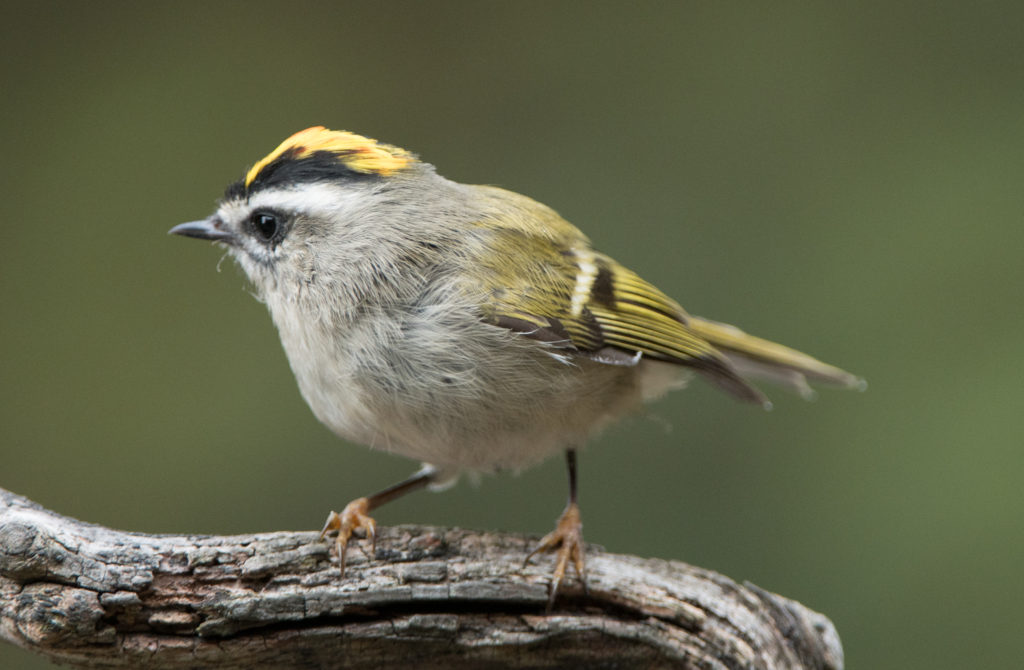
Some time later I would see two more ‘first of the season’ birds… a Ruby-crowned kinglet and a Golden-crowned sparrow!
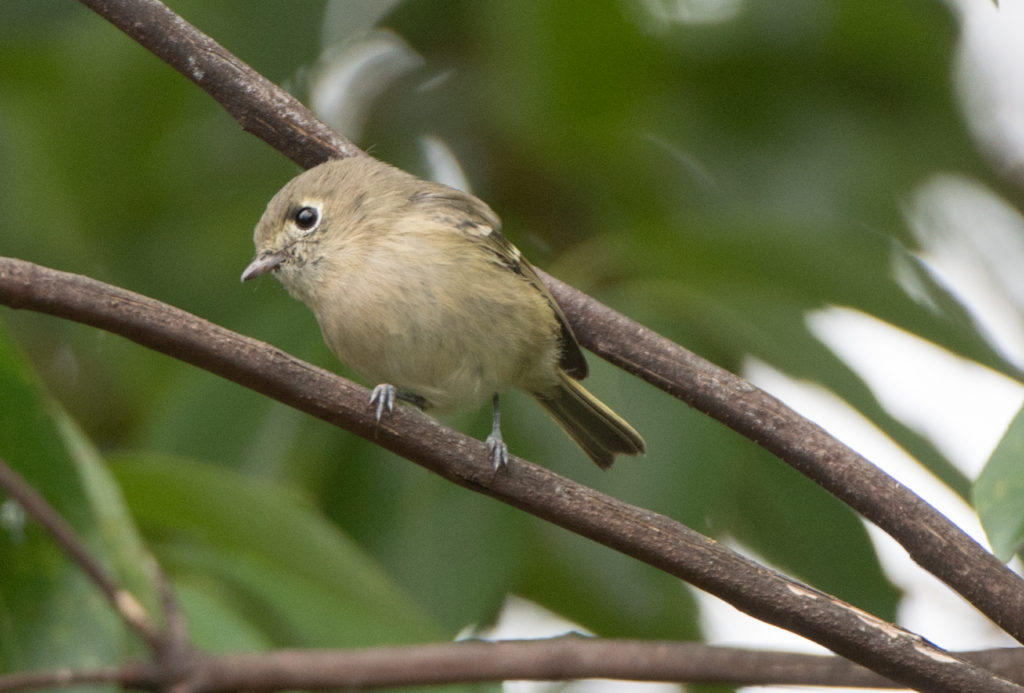
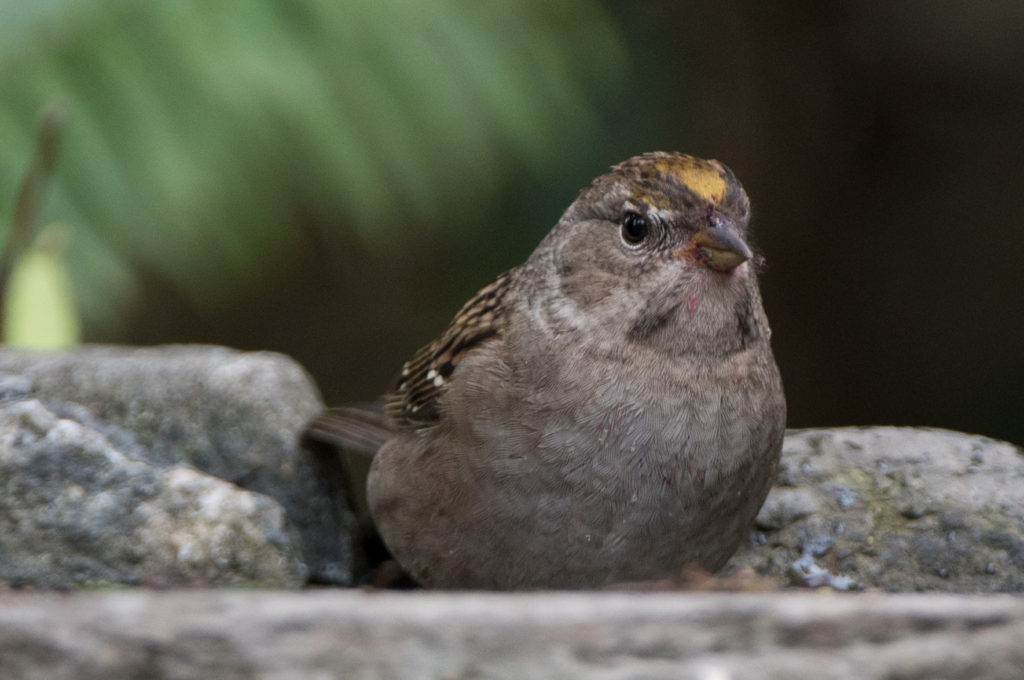
A secession of warblers then began to appear, and I’m still trying to sort out IDs. I think most of them are juveniles and, combined with the fact that by fall most birds have lost much of their brilliant spring/breeding colors, it complicates the ID process.
When photographing birds, strange as it might sound, I’m not trying to specifically ID the birds as I photograph them. My concentration is on following the birds with my telephoto lens and performing the technical steps necessary to obtain good photographs. This applies especially to warblers which can appear similar, but also to other species such as some sparrows. I may think I’m photographing one species but when I process my photos I find that it was a different species than what I had casually/distractedly assumed. This process is different than with birders who are having to make a quick identification through binoculars when in the field.
An excellent example of this was a warbler that I photographed assuming at the time I was photographing it that it was an Orange-crowned warbler. When I processed my photos they allowed me to examine the bird more closely and for a greater length of time. I decided that it was a (juvenile) MacGillivray’s warbler, a very rare visitor to the yard. (I think I’ve had maybe 3-4 sightings over the eleven or so years we’ve lived at this location.) I believe that I actually had two different birds of this species due to slightly different appearances. (SEE SUBSEQUENT POST REGARDING THIS BIRD’S IDENTITY!)
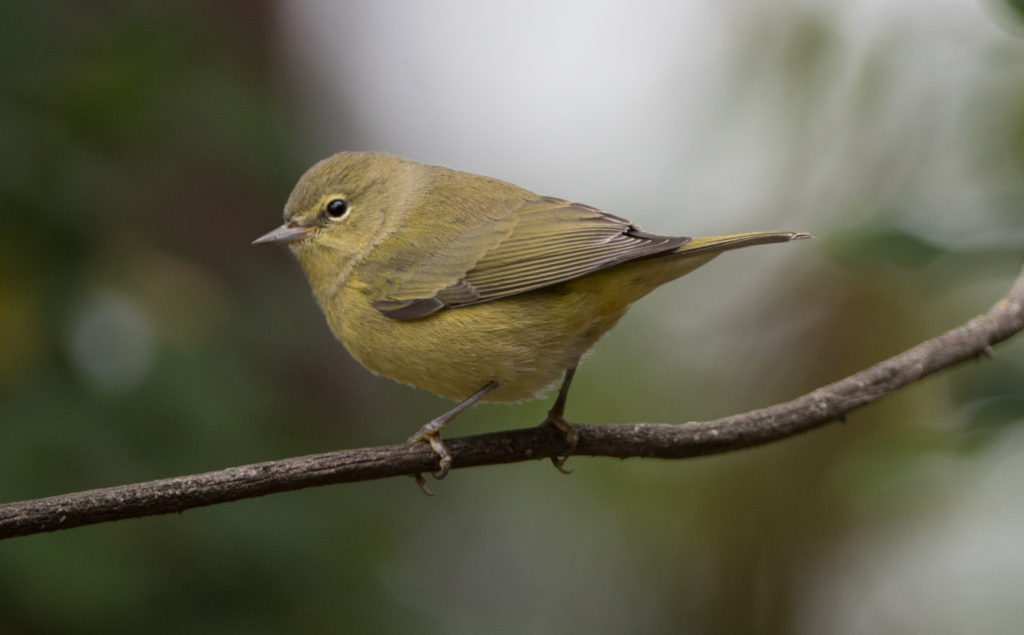
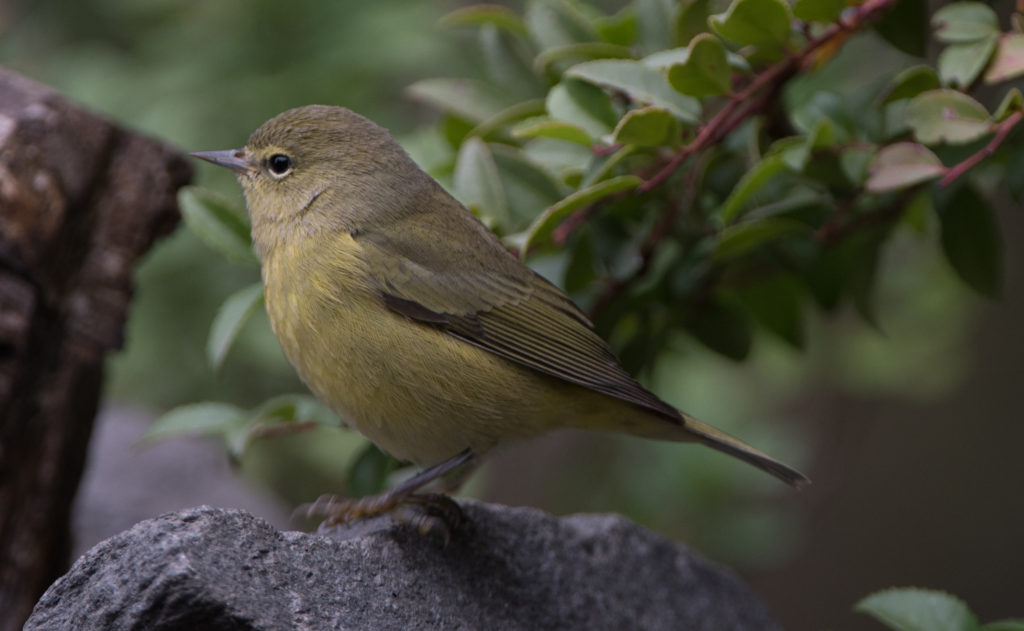
Over the course of the day I observed the following species:
- MacGillivray’s warbler (pictured above)
- Yellow warbler
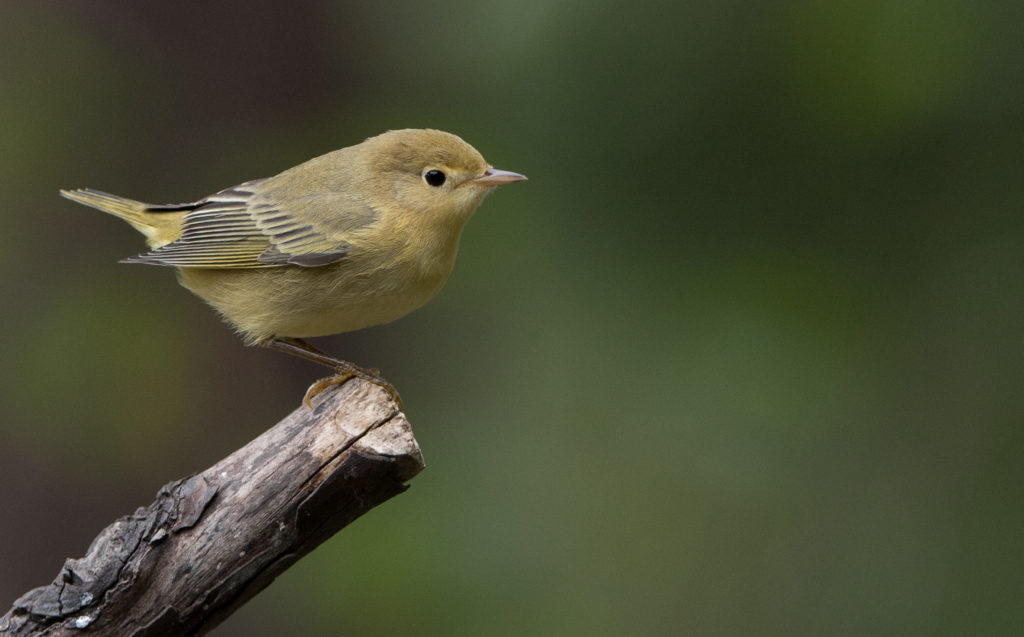
- Orange-crowned warbler (probable)
- House finches (6 males, 2 females)
- Brown creepers (2)
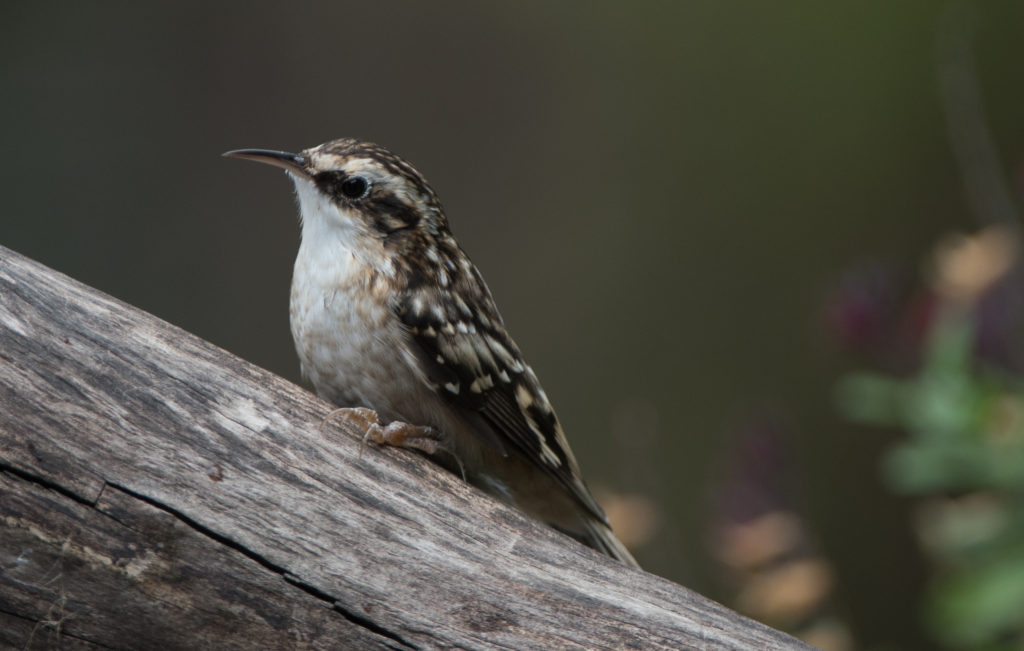
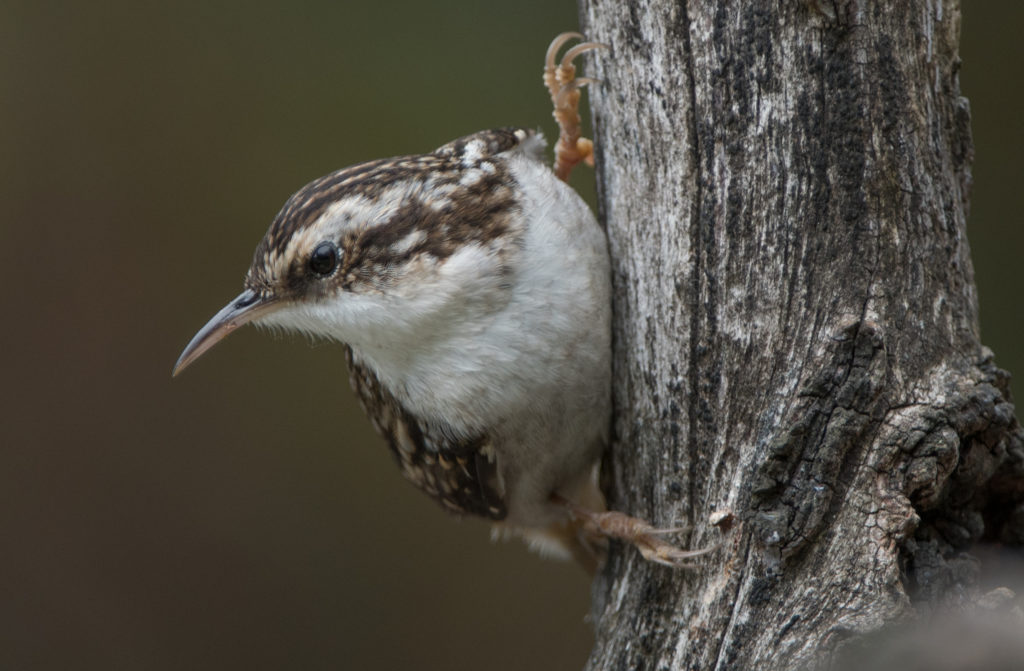
- White-crowned sparrows (adult & 2 juveniles)
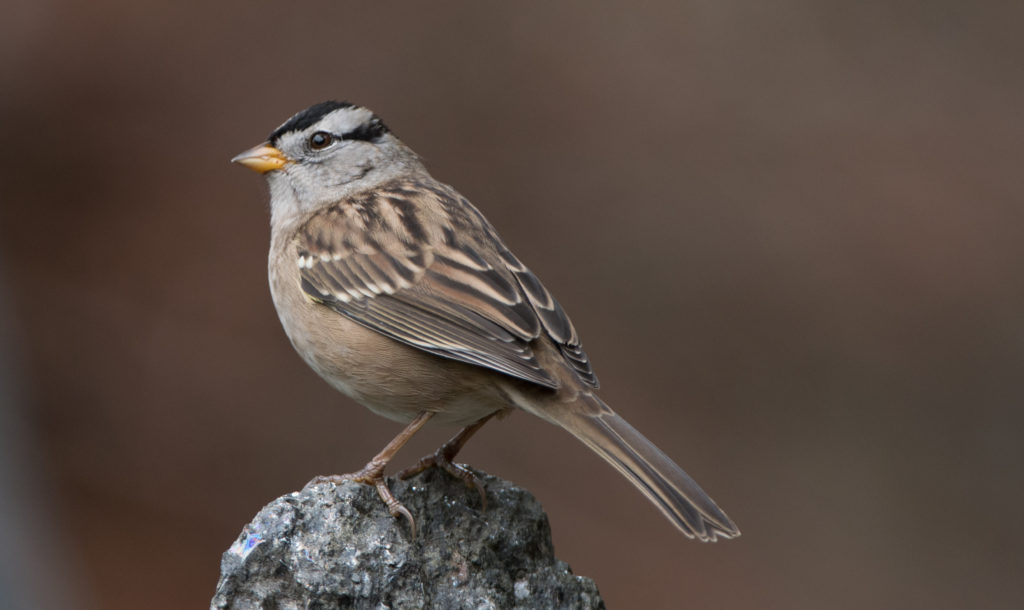
- Song sparrow (first in several weeks)
- Red-breasted nuthatch (2)
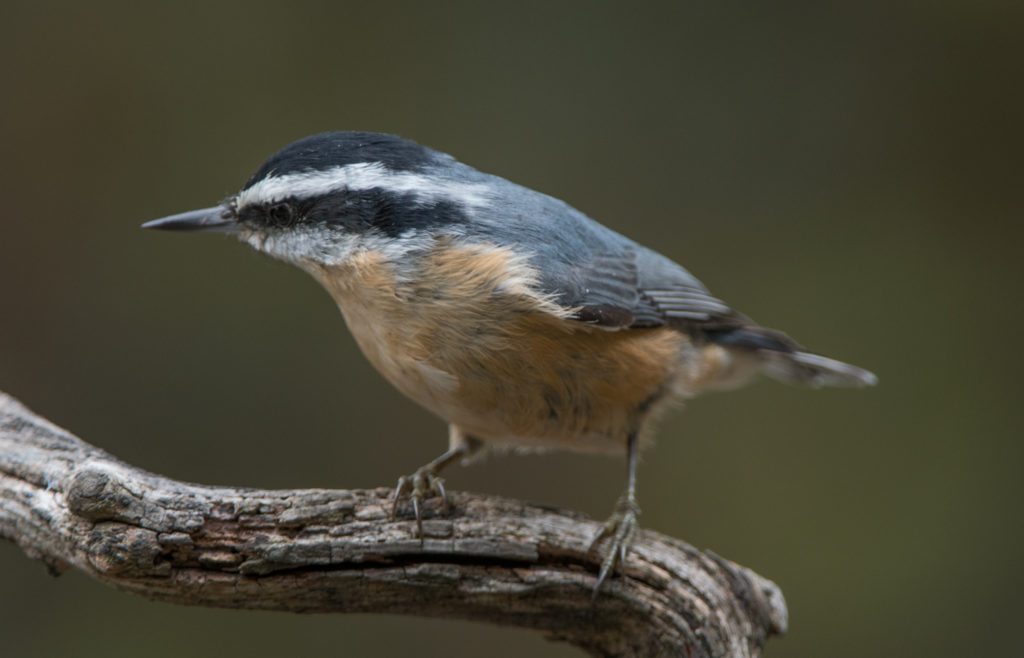
- Bewick’s wren
- Bushtits
- Dark-eyed juncos – Oregon (male & female)
- Northern flickers (2 – male & female)
- Anna’s hummingbirds (minimum 2 males & 1 female)
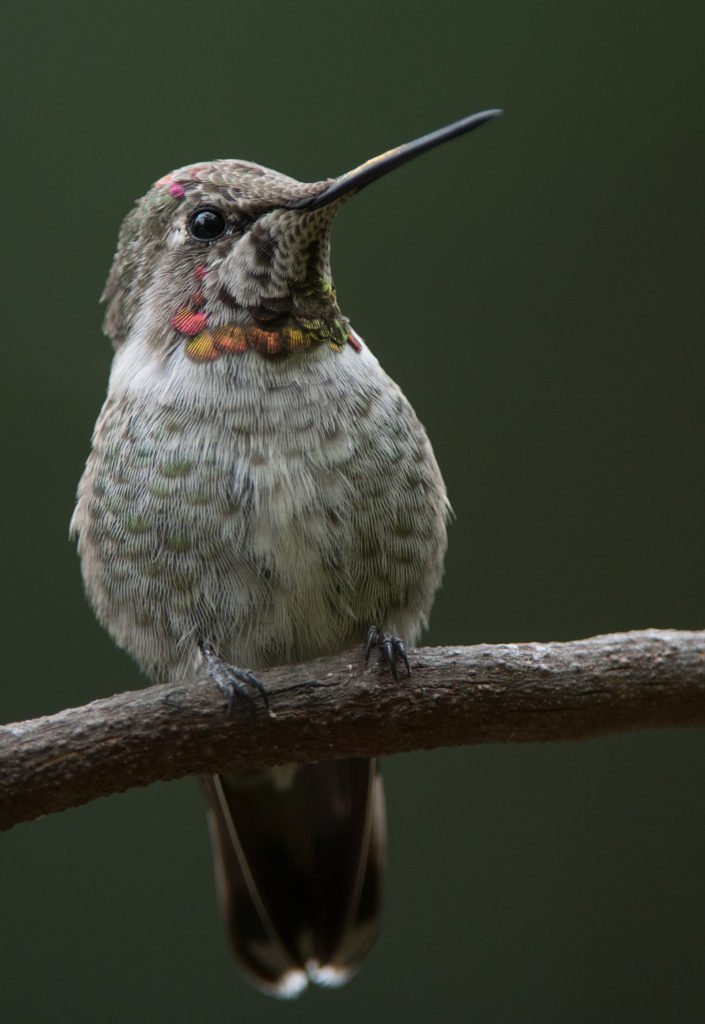
In addition, there were the usual residents:
- Chestnut-backed chickadees
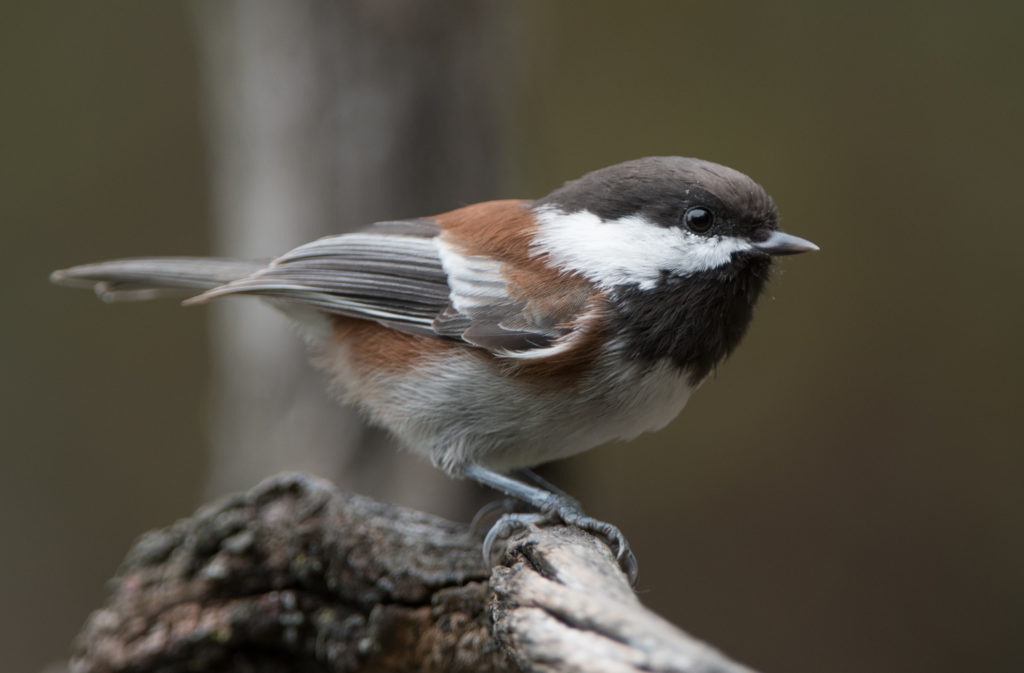
- Black-capped chickadees
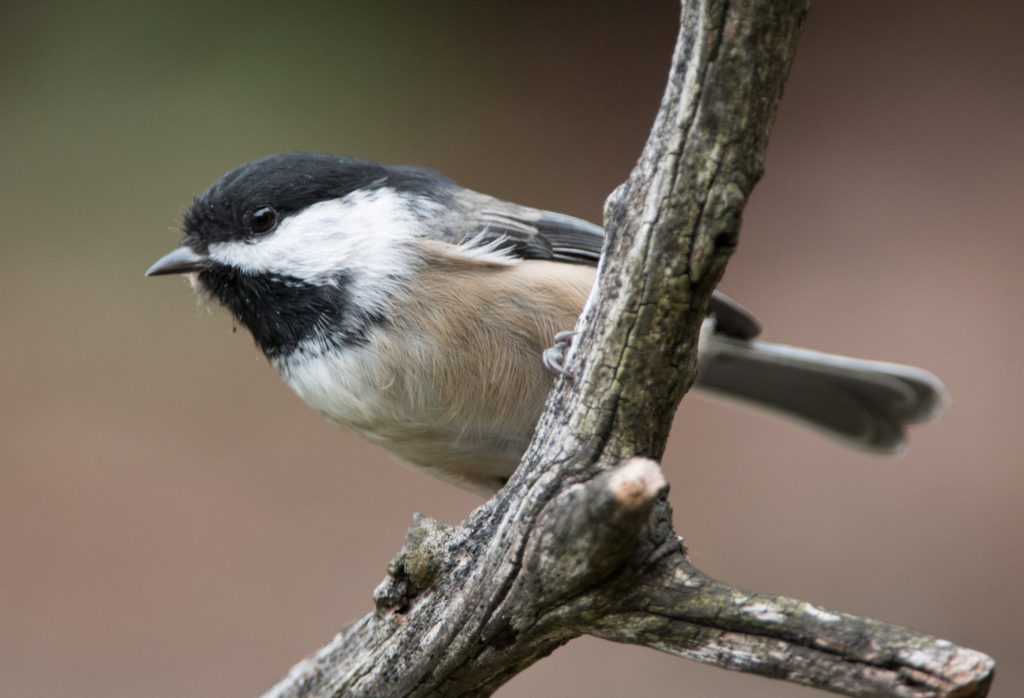
- House sparrows
- American goldfinches
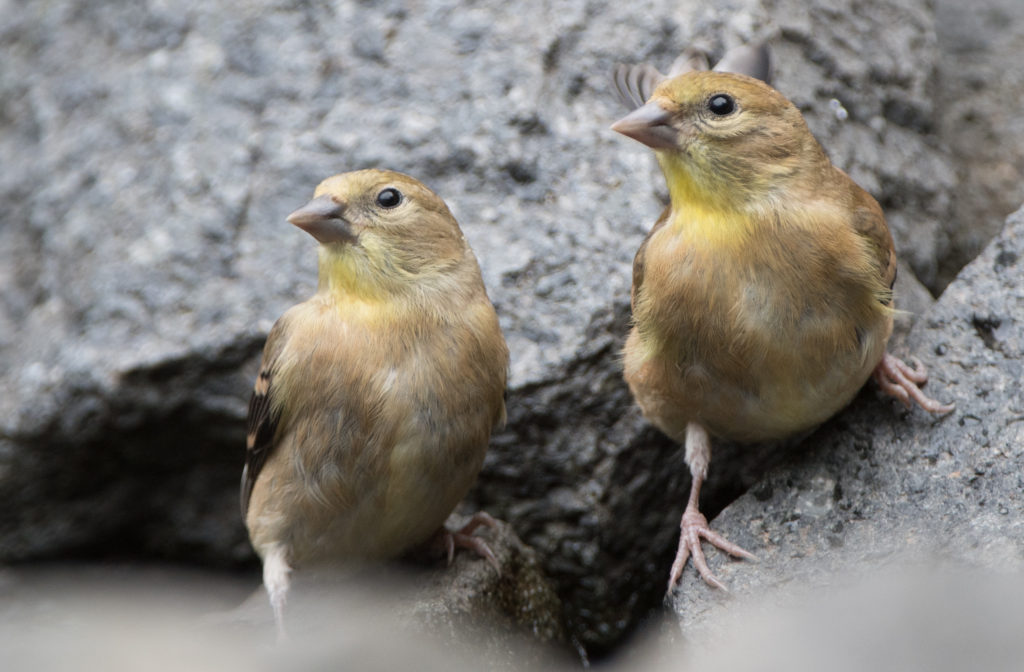
- Spotted towhees (male & female)
- American robin
- California quail (at least 2 males, 2 females)
(Birds listed in italics were photographed, although possibly not multiple birds/sexes.)
In addition, I should mention my newfound friend, now apparently departed… who was around the yard on 9/5-6/2019. A young Pine siskin, pictured below, landed on my camera lens! It’s not the first time that has happened to me. This siskin let me approach very close both while drinking water and while feeding from one of the hanging bird feeders. At first I was worried that it might be sick, but other than not being frightened by my presence, the bird appeared normal. It knew the most direct route between two of the feeders and the watercourse!
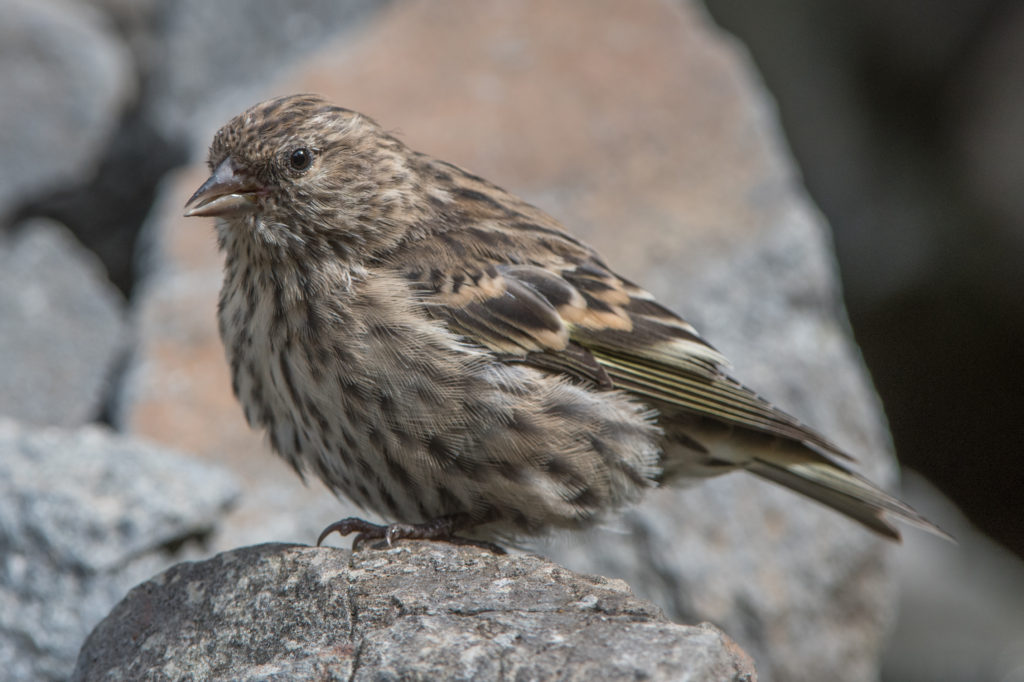
And finally, in a fitting end to a long post, a Warbling vireo briefly visited the yard on 9/3/2019 and “dive-bathed” in our stone bird bath. Unfortunately, I wasn’t able to get quality photos but this photo should be enough for positive identification.
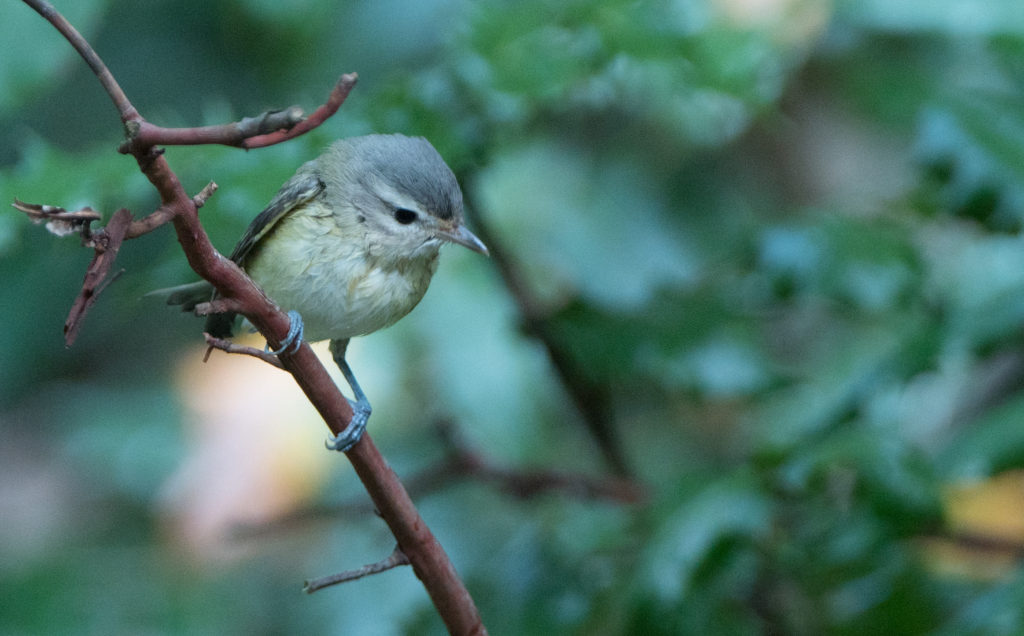
And finally… a note of thanks to all of the better birders than I who provide input that allows me to keep this blog functioning! I don’t consider myself an expert birder or photographer and often must depend on other more experienced birders for advice regarding identification.
